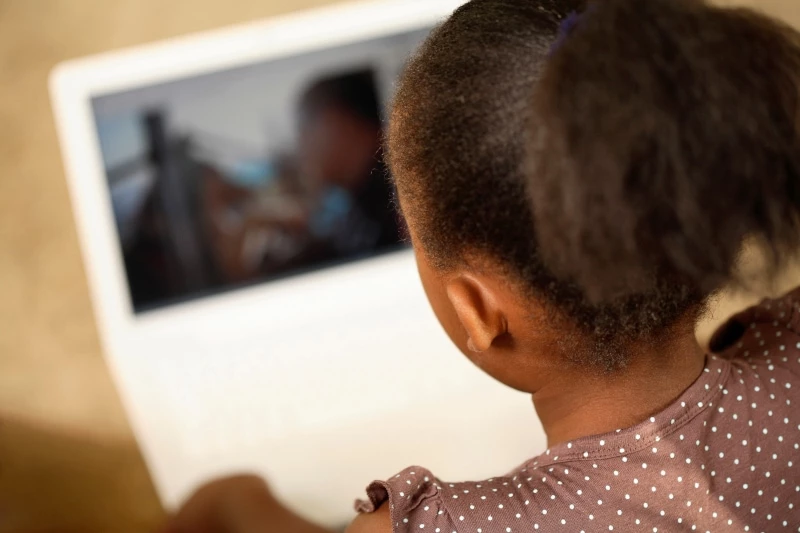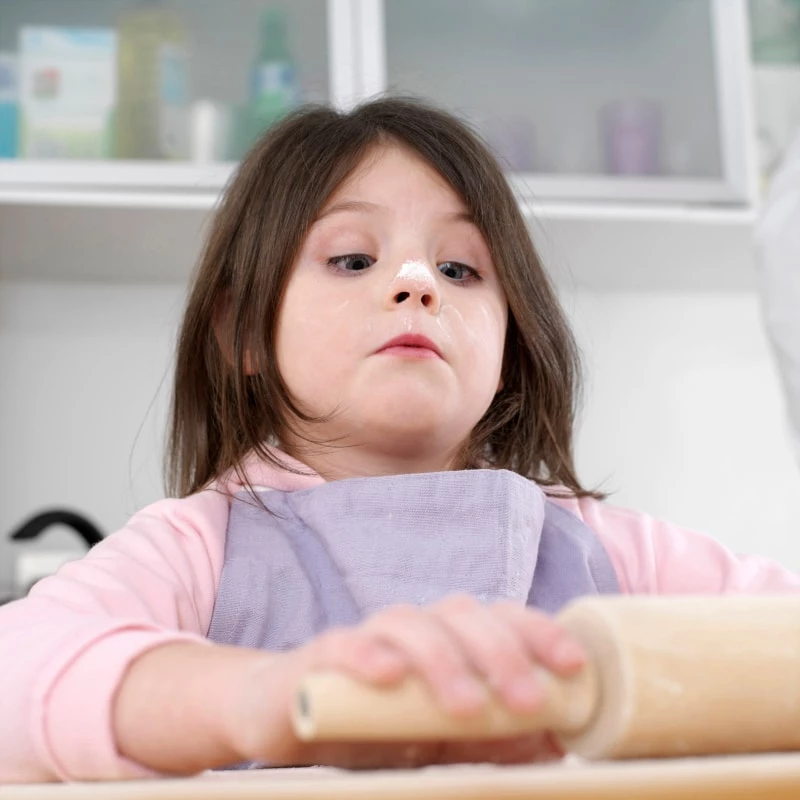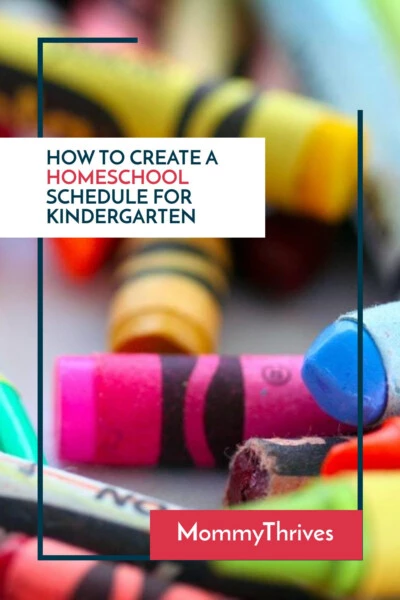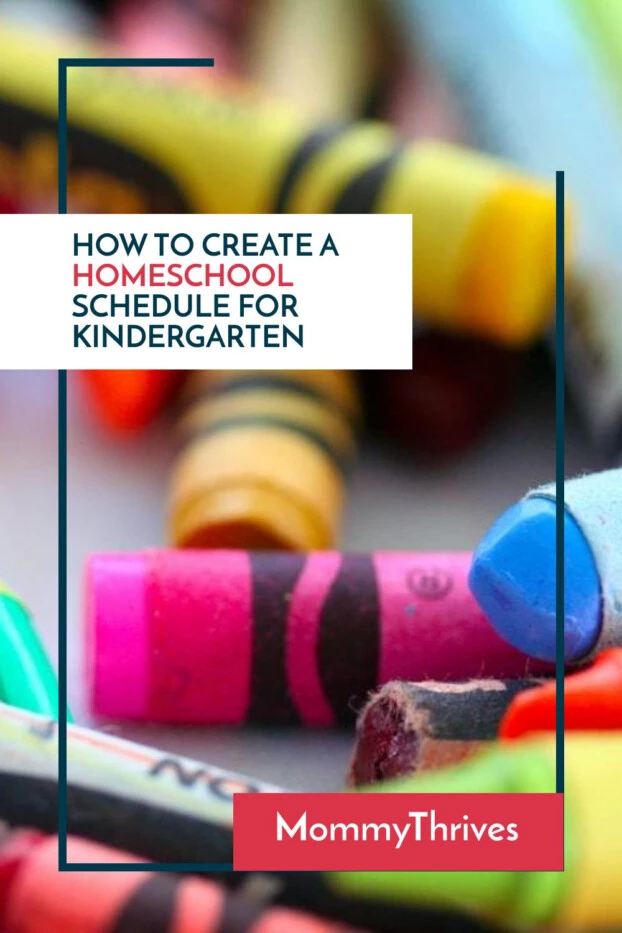You’ve got your curriculum picked out, your supplies are ready to go, and you feel prepared to start homeschooling your kindergartner this year. Now all you need is a schedule to follow.
I’ve got you covered. Today you are going to learn how to set up a schedule that works for you and your kid in Kindergarten.
Why Homeschooling Is Different
Right out of the gate I’m going to give you some good news. A homeschooling day for a kindergartner typically lasts for an hour or two and that is it.
Traditional schooling lasts so long due to the amount of kids that are being taught at the same time. In homeschooling, a typical day of actual curriculum teaching is much shorter than traditional schooling.
Embark On The Journey has a general guide for the length of time that a typical homeschool day takes here.
For busy parents though I can see where squeezing a couple of hours in a day might be a bit difficult. Let it be known that in most cases you are going over a lesson and then letting your child do the work. So you likely won’t be standing over their shoulder the entire time.
Homeschooling also allows for the use of real world teaching experiences. Learning to cook, meal plan, budget, clean, do laundry, take care of a garden, take care of animals, and other daily activities become learning experiences in homeschooling.
Homeschooling – even when using an online curriculum – is really all about the real life experiences you can use to teach.

How Long Should Homeschool Day Take For Kindergarten
Actual curriculum teaching should only take 1 to 2 hours. However, in homeschooling teaching doesn’t stop with curriculum. In homeschooling we use real life opportunities to teach our kids all day long.
Just like when your kids go to traditional school you spend time teaching your kids more after school, we do the same thing with homeschooling, but it’s a bit more relaxed because we have more time in the day to cover everything.
What A Typical Kindergartener Learns
According to Parents.com your kindergartner will be spending time learning:
- To begin reading
- Writing short sentences
- Count to 30, add and subtract small numbers.
- Color, sizes, and shapes.
- Time and seasons
Kindergarten Homeschool Schedule
A sample schedule below will help you to plan out your own homeschool schedule. Pay attention to your child, if they pay attention better after lunch consider switching around when you focus on curriculum.
Morning Learning Time – 1 to 2 Hours
This is when you will follow your curriculum. A minimum of one hour should be spent on curriculum with a maximum of 2 hours. If your child is enjoying the lesson feel free to spend more time on it. This will make up for the days when your child is just not interested in learning.
On the days when your child is not interested in sitting still and learning try to incorporate play, crafts, or other fun activities as a way to teach. Homeschooling gives you the freedom to take it day by day and adjust based on how your kid feels, where traditional schooling doesn’t because they have multiple kids.
Mid Morning Creative Time
Creative time can be coloring, drawing, painting, or crafting. Typically, in traditional kindergarten, children get crafting time daily in class.
Use this time to reinforce other things you may be focusing on in the curriculum. Cutting and pasting shapes, colors, and counting, can all be incorporated into creative time.
Crayola has amazing kits that help with learning through creativity. They have kits in STEAM, Math, and Writing, along with refill kits so you can keep the fun going. You can check out all of the kits here.
Lunch
Take a long lunch break. Eat, get outside for play time, and get in a half hour of resting quiet time. This will be a refreshing break to help burn off energy and get them prepared for more learning or activities in the afternoon.
Early Afternoon Reading Time
I like to include reading time in the afternoon. This is when I sit down with my son and help him practice reading and read along with him. I let him choose the books he wants to read for the day and we sit down on our sofa or in his room to read.
Use your finger to point to the words you are saying and ask your child to say the words too. This will help them to learn how to say a word and how a word is spelled.
Another big part about this reading time is identifying sight words. Sight words are words that we just know what they are. The, go, to, am, and is are all sight words. You want your child to be able to identify what sight words are and memorize them because this will make reading easier for them.
Afternoon Screen Time
In the afternoon I allow for an hour or two of educational screen time. This means he gets to play with ABC Mouse or he can play with the PBS Kids app. We typically start him off with ABC Mouse and after about 30 minutes allow him to switch.
ABC Mouse is a fantastic supplemental tool that helps kids continue to learn outside of their normal curriculum. The trick to this though is to go based on his skill levels and less on where they should be according to society.
Kids easily catch up to other kids, but you have to nurture where they are to get them there. ABC Mouse helps you do that.
Another great option for kindergarteners is to let them watch Daniel Tiger or Sesame Street. Both programs are educationally great for kindergartners but touch a lot on emotions. Understanding emotions helps your kid to grow in maturity and better handle situations that may arise in their life.
Additional Homeschooling Tips
Below are three of my biggest homeschooling tips that help to make learning a fun daily experience. These three things can change the homeschool experience entirely to help your kid thrive.
Use Daily Activities As Learning Experiences
You can teach your kid to cook or clean by having them help you during your chore and meal preparation times. Cooking is great for helping to teach math and science to your kid. Measurements, hot and cold, and kitchen safety can all be taught in daily life.
When you go outside you can teach your kid the different words that describe objects outside. For example, grass is green or the sky is blue.

Visit Outside Places
Obviously, only do this when it’s safe to do so. With the virus around, visiting museums, science centers, and other educational outings may not be safe for your family. Please use your discretion and stay safe.
In homeschooling you can decide to take a day off to go visit a museum, zoo, science center, or any other educational center. These experiences are a lot like field trips that happen normally in school.
The best part though is unlike with a field trip your kid has more time to explore the things that most interest them. You can also go during slow hours to avoid crowds and provide a calmer learning experience for your kid.
Join A Local Homeschooling Group
Search Facebook and Google to find a good local homeschooling group to join. These groups will not just connect you with other homeschooling families they will likely have events that you can take part in.
This is where the socialization portion of homeschooling comes in. In traditional schooling your kid may work on projects or be around other kids all day, that doesn’t mean they are learning how to socialize effectively though.
In homeschooling socialization is much more in depth with kids learning how to actually communicate with one another. They are able to form friendships and relationships much more easily in this type of environment. Additionally, they are able to seek out friends that they have more in common with than just being in the same class.
Homeschooling groups offer diversity in your homeschooling experience that actually helps your child to get ahead. In a homeschooling group you can find support, experience, and get helpful advice to tackling any problems that come up.
Kindergarten Schedule For Homeschooling
While the curriculum portion of schooling may only take an hour or two of your time in a day, homeschooling allows you to use all sorts of different learning experiences.
The key to success in homeschooling is to learn to go with the flow in your schedule. If your kid has extra energy they need to burn, spend the day at the zoo or a science center. If your child is really getting into the lessons that day go for as long as they want.
Working with your kids actually moods and motivations is easier than trying to stick to a strict schedule. They are kids, they don’t need to be sticking to strict schedules for a couple more years.
What does your homeschool schedule look like? Let me know in the comments below. Follow me on Pinterest for more like this and pin this to your favorite homeschool boards.
Recommended Posts
- The Best Workbooks For Homeschooling Kindergartners
- The Best Homeschooling Advice For Beginners
- ABC Mouse – What Parents Need To Know
- How To Create A Homeschool Space In Your Home

